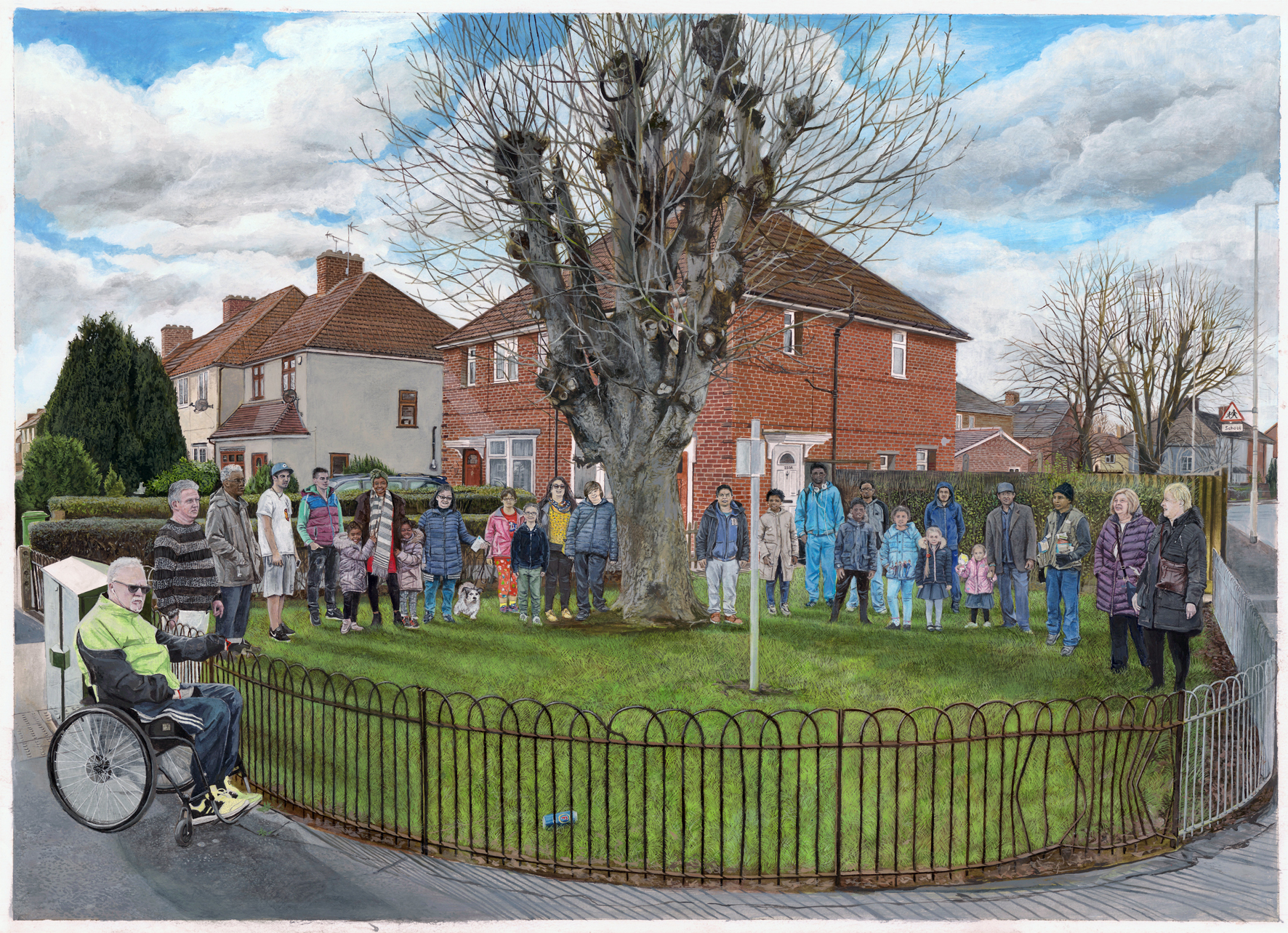Wouter Osterholt
Dutch artist, Wouter Osterholt undertook an International residency at The White House in November 2017 - March 2018 in partnership with V&A Research Institute (VARI).
During his residency, Wouter explored the utopian origins of the garden city movement so as to re-imagine new models of communal living within Dagenham's Becontree Estate, allegedly the biggest municipal housing project in the world. As a starting point he looked at the meaning of the name 'Becontree', as recorded in the Domesday Book of 1086, which derives from the words 'Beacon' and 'Tree'. The original tree indicated the location where early hundred meetings took place.
Wouter Osterholt’s work often re-contextualises existing material such as buildings, monuments, sculptures, rituals or archival material to manifest fault lines and breaking points in our political landscape, where social injustice, conflicts or problems come to light.
In the first stage of his residency, Wouter hosted a study week at The White House to collectively explore past, present and future visions of the Becontree Estate inviting local Councillors, historians, architects, activist, experts, residents and regular White House visitors.
Throughout the residency Wouter inhabited and occupied green public spaces across the estate, synonymous with the utopian design of the Becontree estate. Wouter set up his easel on these public sites and painted these various locations, using this process to engage over 80 local residents in conversation about the area, employing painting as public performance.
Wouter produced three paintings of characteristic trees around The White House as a strategy to reenact the ancient tradition of the tree as a meeting place and site of political assembly. Whenever passersby approached him during his painting sessions he portrayed the people around the tree.
Valence Avenue by Wouter Osterholt
Exactly a year after his residency at The White House ended, Wouter Osterholt returned to present his project "Beacon Tree" in March 2019.
The paintings are on permanent display at The White House, not just as works of art, but also as a means to organise a community gathering. The portrayed residents were invited to the opening of the exhibition where they received a printed copy and met the other residents, effectively re-staging the painting. During the meeting the people were asked to imagine a storyline that 'explains' the reason for their gathering. What could have been the reason that they assembled under the tree? What kind of political narrative can they collaboratively think of?
For the final stage of the residency and as a permanent legacy, Wouter will erect a number of plaques on green sites across the neighbourhood showcasing the paintings and the various narratives of residents and their visions for the future of Becontree, acting as a marker for the social and political aspirations of the current generation of the estate.
“Within the context of the Becontree Estate I am primarily interested in the ideological foundations of the garden city movement of Ebenezer Howard and how its physical virtues were ‘fetishised’ at the expense of its social goals. My main objective for the residency is to find a way to experiment with the radical potential of the original movement. In recent years, it has become clear that Britain’s housing situation is in a deep crisis, compounded by a political crisis and new global pressures from climate change and immigration. This is a timely moment to rediscover and re-imagine the garden city principles and the benefits of establishing sustainable and socially just communities.” – Wouter Osterholt
Walnut Tree Road by Wouter Osterholt
Read Wouter Osterholt’s text about his residency at The White House: How Finding Participants Becomes a Work of Art by Wouter Osterholt


